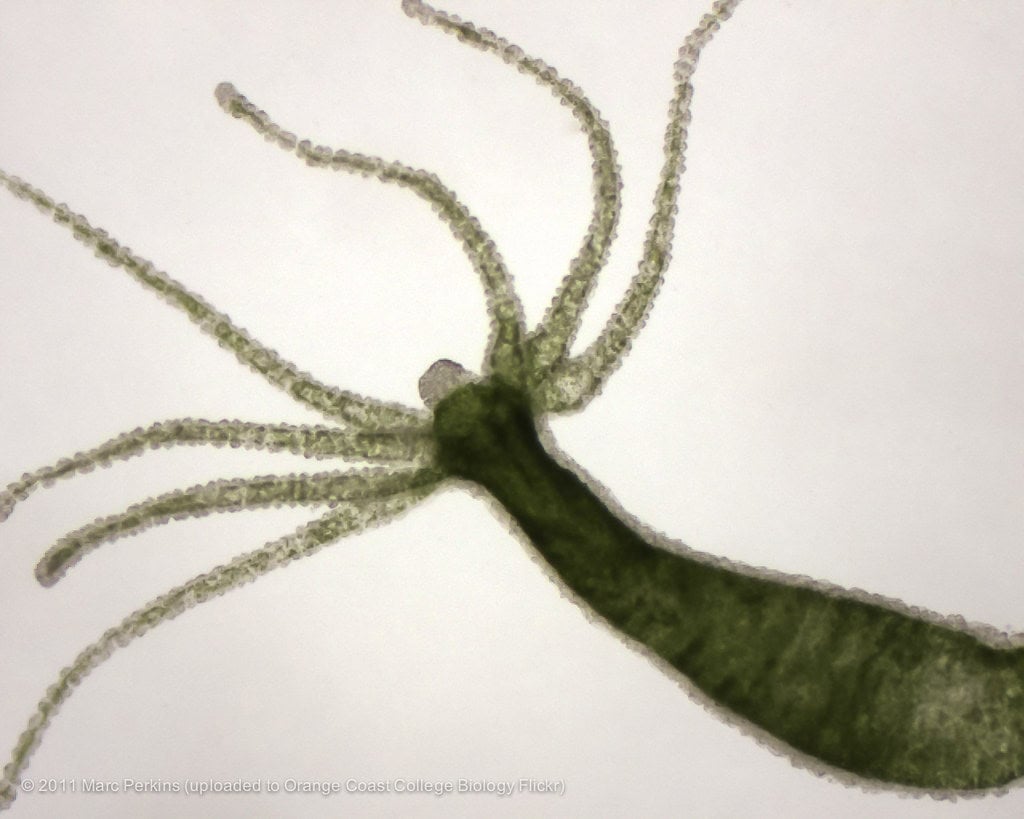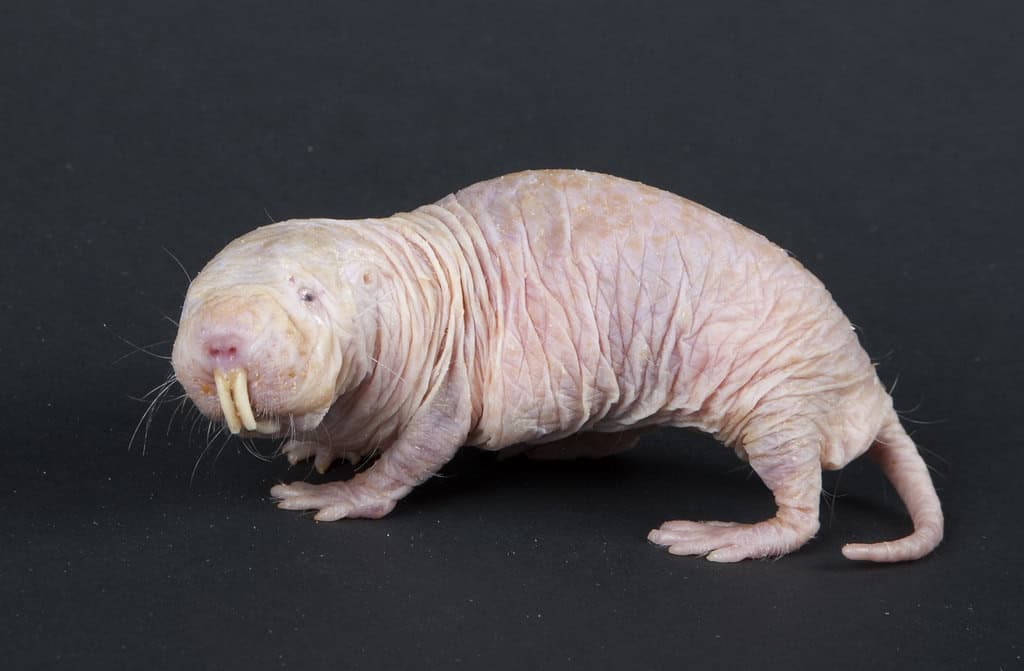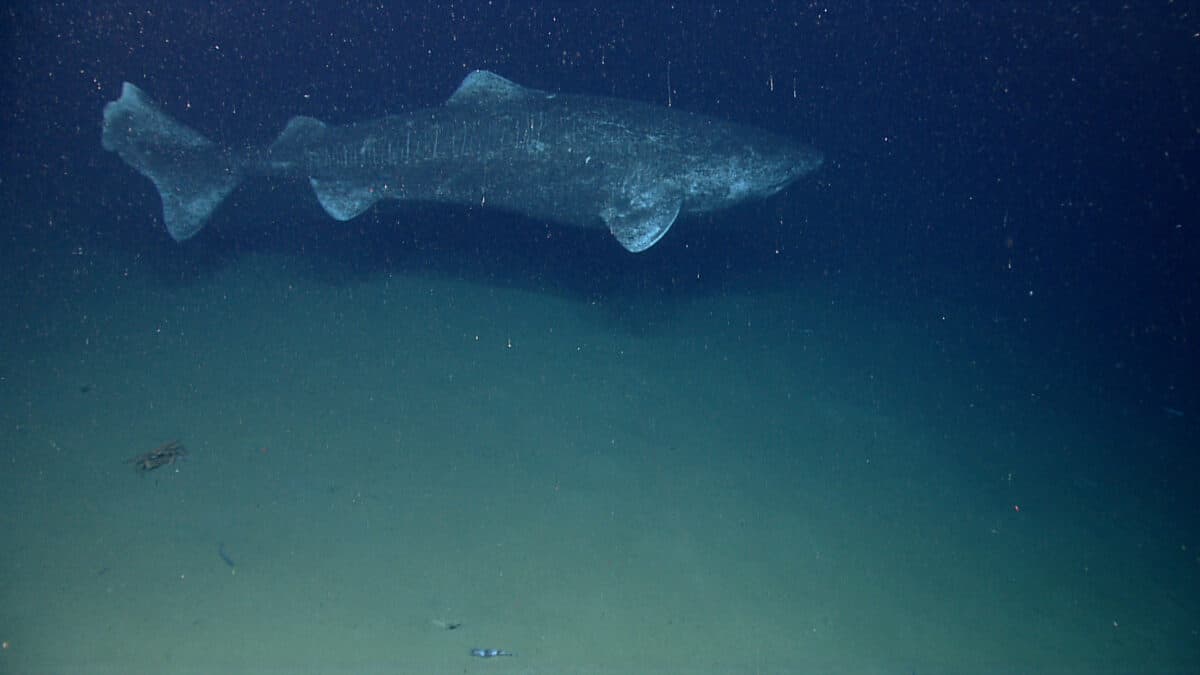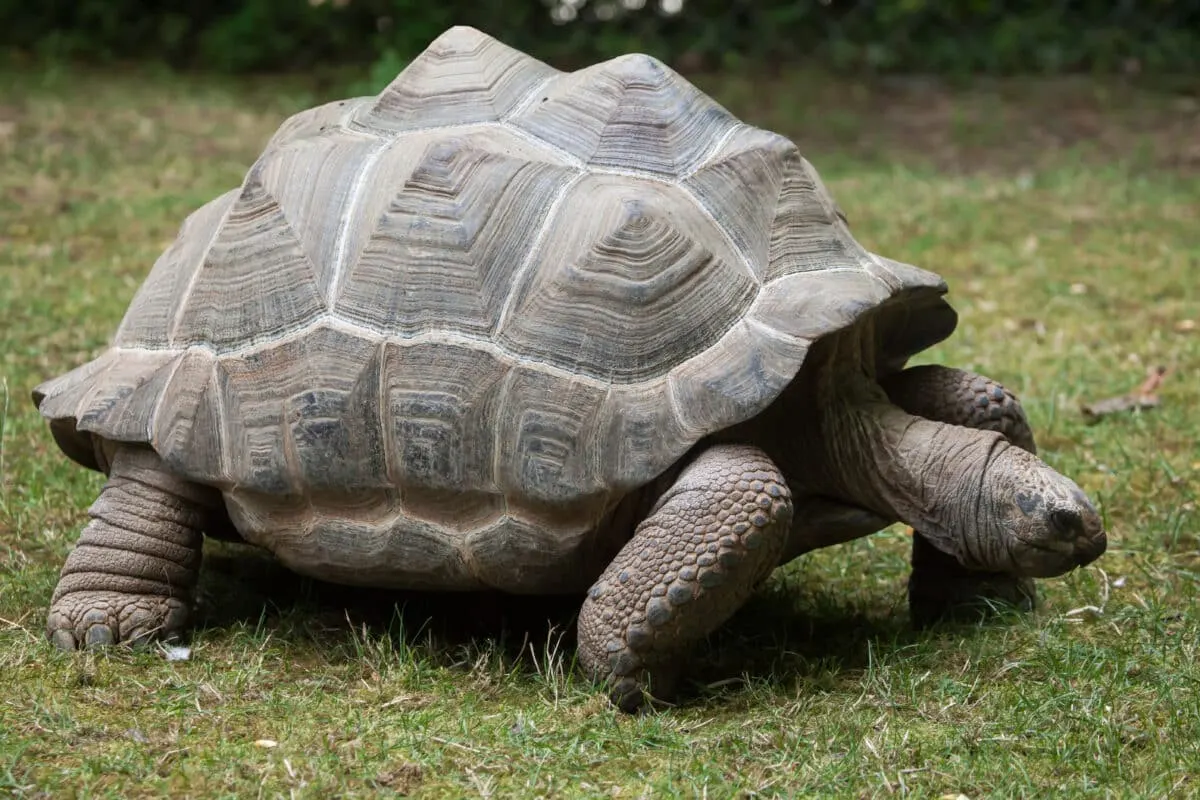Aging is a universal process that affects all living organisms, but not all creatures experience it the same way humans do. While we humans show predictable signs of aging—wrinkles, gray hair, declining mobility, and increased susceptibility to disease—some animals have evolved remarkable ways to resist, slow, or even seemingly reverse the aging process. These biological marvels challenge our understanding of senescence and hold potential insights for human longevity research. From immortal jellyfish to negligibly senescent tortoises, let’s explore the fascinating world of animals whose aging processes defy conventional expectations.
Turritopsis dohrnii The Immortal Jellyfish

Perhaps the most extraordinary example of age defiance in the animal kingdom is the Turritopsis dohrnii, commonly known as the immortal jellyfish. This tiny, bell-shaped creature (measuring only about 4.5 mm across) possesses a biological superpower that makes it theoretically immortal. When faced with starvation, physical damage, or other environmental stressors, the mature jellyfish can revert to its juvenile polyp stage through a process called transdifferentiation—essentially resetting its life cycle. This remarkable ability allows it to potentially cycle between mature and immature states indefinitely, effectively escaping death from old age. First discovered in the 1880s in the Mediterranean Sea, these jellyfish have now spread throughout the world’s oceans, carried in ship ballast waters. While they can still die from predation or disease, their biological immortality has made them a subject of intense scientific interest for researchers studying longevity.
Hydra The Regenerating Freshwater Polyp

Hydras are small, freshwater relatives of jellyfish that demonstrate negligible senescence—showing no measurable reduction in survival or reproductive ability with age. These tube-shaped organisms, typically measuring between 0.1-0.4 inches (3-10 mm), maintain their youthful vigor through continuous cell renewal. They contain stem cells that divide constantly to replace aged or damaged cells, allowing them to regenerate their entire bodies even when cut into pieces. A landmark study published in 2012 observed hydras for over four years (equivalent to about 200 human years) and found no signs of aging or increased mortality. This perpetual youth is attributed to their expression of the enzyme telomerase, which prevents the shortening of telomeres (protective caps on chromosomes) that typically occurs with cell division and contributes to aging in most organisms. Their remarkable regenerative abilities and apparent immortality make hydras valuable models for aging research.
Aldabra Giant Tortoise The Century-Spanning Reptile

The Aldabra giant tortoise (Aldabrachelys gigantea) exemplifies “negligible senescence,” a term scientists use to describe animals that show extremely slow aging processes. These massive reptiles, weighing up to 550 pounds, can live well beyond 100 years, with some documented individuals exceeding 250 years. What makes these tortoises fascinating is that they don’t experience the typical decline in physiological functions that characterize aging in most vertebrates. Their reproductive capabilities remain largely intact even in advanced age, and they don’t show significant increases in disease susceptibility. Their cells appear to have enhanced resistance to oxidative damage, one of the primary mechanisms of aging, and they possess robust DNA repair mechanisms. Perhaps the most famous Aldabra tortoise was Jonathan, who lives on the island of St. Helena and is estimated to be about 191 years old as of 2023, making him the oldest known living land animal. Their extraordinary longevity provides valuable insights into the biological mechanisms that protect against age-related decline.
Naked Mole-Rat The Cancer-Resistant Rodent

The naked mole-rat (Heterocephalus glaber) has become a scientific sensation due to its exceptional longevity and resistance to age-related diseases. While most rodents live only 2-3 years, naked mole-rats routinely survive for over 30 years—nearly ten times longer than predicted by their body size. Remarkably, these wrinkled, hairless creatures show little to no physical or physiological deterioration with age. Their risk of mortality does not increase as they get older, a dramatic departure from the exponential increase in death risk that characterizes human aging. They remain fertile throughout their lives and show remarkable resistance to cancer, with virtually no documented cases in wild or captive populations. This cancer resistance stems from unique molecular adaptations, including the production of high-molecular-weight hyaluronan, which prevents cells from overcrowding and forming tumors. Additionally, their cells exhibit enhanced protein stability and resistance to oxidative stress. Scientists at Google’s longevity research company, Calico, are intensively studying naked mole-rats to understand how their unique biology might inform human anti-aging strategies.
Lobsters The Continuously Growing Crustaceans

Lobsters possess an unusual relationship with aging that has frequently been mischaracterized as “biological immortality.” While they do age differently than humans, they are not immortal. What makes lobsters special is their indeterminate growth—they continue to grow throughout their lives, molting their exoskeletons to accommodate their increasing size. This process is facilitated by an enzyme called telomerase, which helps maintain the protective caps on their chromosomes called telomeres. In humans, telomere shortening contributes to cellular aging, but lobsters produce telomerase throughout their lives. Additionally, lobsters don’t experience reproductive senescence; they maintain fertility and may even become more fertile with age. Some American lobsters (Homarus americanus) have been estimated to reach ages of 100 years or more in the wild. However, they do eventually die from exhaustion during molting (which becomes more energetically expensive as they grow larger), disease, or predation. Their unique aging characteristics have nonetheless made them valuable subjects for studying the biological mechanisms of longevity.
Greenland Shark The Centuries-Old Predator

The Greenland shark (Somniosus microcephalus) holds the distinction of being the longest-lived vertebrate known to science. These slow-moving predators of the deep North Atlantic don’t reach sexual maturity until they’re about 150 years old and can live for at least 272 years, with some estimates suggesting maximum lifespans over 500 years. A 2016 study in Science used radiocarbon dating of eye lens proteins to determine that a 16-foot specimen was approximately 392 years old, plus or minus 120 years. These sharks grow extremely slowly, at about 1 cm per year, which may contribute to their exceptional longevity. Their body tissues contain high levels of urea and trimethylamine oxide, which, beyond helping with buoyancy, may provide protective effects against protein damage. Living in the cold, dark depths of the Arctic and North Atlantic Oceans also slows their metabolism significantly, potentially reducing the accumulation of cellular damage that drives aging. Their extraordinary lifespans mean that some Greenland sharks swimming today were alive during the founding of the United States and the Industrial Revolution, making them living historical artifacts as well as biological marvels.
Bowhead Whale The Arctic Centenarian

Bowhead whales (Balaena mysticetus) are the champions of longevity among mammals, with lifespans that can exceed 200 years. These massive Arctic creatures, which can grow up to 60 feet long and weigh 100 tons, have had their ages verified through remarkable methods. Scientists have found ancient harpoon heads from the 1800s embedded in the blubber of whales harvested in the late 20th century, and analysis of eye lens proteins and aspartic acid racemization in their tissues has confirmed their extraordinary lifespans. What makes bowhead whales especially fascinating to aging researchers is that despite their long lives, they show remarkably little evidence of age-related diseases. They appear to have evolved effective mechanisms to prevent cancer and other disorders typically associated with aging in long-lived animals. Research has revealed that bowheads possess unique genetic adaptations related to DNA repair, cell cycle regulation, and cancer resistance. For example, they have duplications of the PCNA gene, which is involved in DNA repair, and alterations in the ERCC1 gene that may enhance cancer suppression. These biological innovations, developed over evolutionary time to protect their large bodies over extended lifespans, hold potential insights for human anti-aging research.
Rockfish The Long-Lived Ocean Dwellers

Several species of rockfish (Sebastes) demonstrate exceptional longevity that far exceeds what would be expected for fish of their size. The rougheye rockfish (Sebastes aleutianus) can live over 200 years, while the shortraker rockfish (Sebastes borealis) typically lives for about 120 years. These deep-dwelling fish show remarkably little deterioration with age and can remain reproductively active throughout their extended lives. Scientists determine their age by counting growth rings in their otoliths (ear bones), similar to counting tree rings. What makes rockfish particularly interesting to longevity researchers is that their cells appear to be exceptionally resistant to oxidative stress—a major contributor to aging. They possess enhanced DNA repair mechanisms and produce natural antioxidants that protect against cellular damage. These adaptations may have evolved in response to the harsh, cold, high-pressure environments they inhabit in the deep ocean. Rockfish also show minimal telomere shortening with age, suggesting effective mechanisms for maintaining cellular integrity over centuries. Comparative studies of different rockfish species with varying lifespans are providing valuable insights into the genetic basis of extreme longevity.
Olm The Cave-Dwelling Amphibian

The olm (Proteus anguinus), sometimes called the “human fish” due to its pinkish, flesh-colored skin, is a blind salamander that inhabits the underwater cave systems of the Dinaric Alps in Southern Europe. These strange amphibians can live for over 100 years, an exceptional lifespan for an amphibian of their size (typically 8-12 inches long). Olms exhibit a suite of adaptations that contribute to their longevity. Their metabolic rate is exceptionally slow—they can go without food for up to 10 years by reducing their activity and drawing on their liver and fat reserves. They develop at an extraordinarily slow pace, taking about 14 years to reach sexual maturity, and females lay eggs only once every 12.5 years on average. Olms possess substantial regenerative capabilities, able to regrow damaged limbs and other tissues even in old age. Living in stable, predator-free underground environments has allowed them to evolve a “slow life” strategy that favors longevity over rapid reproduction. Recent research suggests that olms maintain stable epigenetic patterns throughout their lives, avoiding the epigenetic changes that normally accompany aging in other organisms. Their unique biology makes them valuable subjects for understanding the relationship between metabolic rate, development speed, and longevity.
Ocean Quahog The Immortal Mollusks

The ocean quahog (Arctica islandica), a species of edible clam native to the North Atlantic, holds the record for the longest-lived non-colonial animal ever discovered. In 2006, scientists found a specimen nicknamed “Ming” (named after the Chinese dynasty during which it was born) that was 507 years old, meaning it had been alive since 1499. Ocean quahogs determine their age through growth rings in their shells, similar to tree rings. These bivalve mollusks grow extremely slowly and demonstrate negligible senescence, showing little functional decline with age. What makes them exceptional subjects for aging research is their remarkable resistance to oxidative stress—one of the primary drivers of cellular aging. Their cells contain powerful antioxidant systems and maintain stable protein quality control even after centuries of life. Additionally, ocean quahogs can enter states of metabolic arrest during unfavorable conditions, dramatically reducing their oxygen consumption and energy expenditure. This ability to essentially “pause” their metabolism may contribute to their extraordinary lifespans by minimizing the accumulation of cellular damage. Researchers are particularly interested in understanding how these animals maintain mitochondrial function and genomic stability over such extended periods—insights that could inform human aging interventions.
Bivalve Mollusks The Long-Lived Shellfish

Beyond the ocean quahog, several other bivalve species demonstrate exceptional longevity that far outpaces what might be expected from their relatively simple biological organization. Freshwater pearl mussels (Margaritifera margaritifera) can live for more than 200 years, while Pacific geoduck clams (Panopea generosa) routinely reach ages exceeding 150 years. These bivalves show minimal signs of physiological decline with age and maintain reproductive capabilities throughout their extended lives. Their extraordinary lifespans are attributed to several biological mechanisms. Bivalves possess efficient cellular repair systems that can fix DNA damage and remove damaged proteins. They also have robust antioxidant defenses that neutralize reactive oxygen species, preventing the oxidative damage that contributes to aging. Additionally, many long-lived bivalves can enter states of suspended animation during adverse conditions, dramatically reducing their metabolic rate and the associated production of damaging byproducts. Their sedentary lifestyle and filter-feeding habits minimize energy expenditure, potentially allowing more resources to be devoted to cellular maintenance and repair. The contrast between their simple nervous systems and extraordinary longevity raises intriguing questions about the relationship between brain complexity and lifespan limitations.
Conclusion: What We Can Learn From These Ageless Wonders

The diverse array of animals that defy conventional aging patterns represents more than just biological curiosities—they offer potential roadmaps for understanding and perhaps even intervening in human aging processes. From the cellular regeneration of hydras to the cancer resistance of naked mole-rats, each of these remarkable creatures has evolved unique strategies to maintain physical function and avoid age-related decline. What’s particularly striking is that these adaptations have emerged independently across different evolutionary lineages, suggesting that nature has found multiple solutions to the challenge of aging. Scientific research into these exceptional animals continues to accelerate, with advanced genomic, proteomic, and computational tools enabling deeper insights into the molecular mechanisms underlying their longevity. While human immortality remains firmly in the realm of science fiction, the biological innovations discovered in these age-defying animals may eventually translate into interventions that extend healthy human lifespans or reduce the burden of age-related diseases. In studying these remarkable creatures, we not only gain appreciation for the extraordinary diversity of life strategies on our planet but also potential glimpses into our own future relationship with the aging process.
- 12 Fastest Animals on Land and Sea - August 16, 2025
- Why Do Orcas Kill Great White Sharks? The Startling Science - August 16, 2025
- 12 Wild Animals That Changed Ecosystems Forever - August 16, 2025

